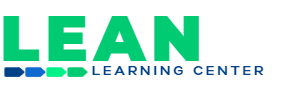Many organizations complain about having difficulty maintaining standards on the shop floor. We often make improvement only to find the process regresses back to its previous state in a short period of time. A closer look at the audit process will often show the following types of symptoms:
- Standard work is posted, but no one is following it. The sequence, timing, and content of work changes within each operator as well as from one operator to another.
- There are inconsistencies in incoming materials that cause over processing at the workstation and overburden to operators. This may lead to defects and operational delays.
- Poorly designed products and processes that cause unevenness and overburden.
- 5S is not maintained or consistent between one shift and another.
- Uncontrolled tools and materials are squirreled away in cabinets as a result of hoarding for just in case reasons.
- Non-conforming materials are not properly identified which exposes the operation to risk.
These issues may indicate a general lack of management oversight of the process. Management oversight may typically occur in the form of system audits, control point checklists, or other structured reviews of the operation. An audit is essentially a check on the system to see that activities are being performed to a standard or target condition. Just saying the word “Audit” will often strike a nerve in most managers because it seems contradictory to creating value in the organization. Audits do not meet all the requirements to be considered value added. The customer is typically not willing to pay for internal audits except in certain situations. The physical product or service we provide does not change as a result of conducting the audit. In addition, the reason why we are doing the audit in the first place is because we can’t get the activity right the first time. By definition, audits are non-value added. However, they are essential in many organizations to prevent backsliding as well as ensuring the process continues to move forward. Here are some tips that will help you correctly frame and communicate the audit as an important management tool.
Perform audits frequently. Many companies that perform audits on the production system do not conduct them at a frequency great enough to be able to detect variation in the 4Ms. For example, material variation may initially be slight and the operator of a process may deviate from standard work methods to adjust for the variation. Eventually this leads to habit in which standard work is no longer being followed. This creates an even greater potential for error. Frequent observations will shorten the detection time on slight variation. If the process in question is a production line and operator rotation is a standard practice, then audits should target at least every operator on every rotation weekly. In order to sustain this high frequency of auditing, it is important to train and bring other key functional areas into the process.
Next week, we’re going to pick up where we left off and further discuss who should manage and oversee an audit as well as the importance to solve systemic problems within the results.
About Lean Learning Center
The Lean Learning Center was founded in 2001 to address the gaps and barriers that are holding back companies from successful and sustainable lean transformation. In addition to the advanced curriculum, the Center has developed a learning environment designed specifically for adult learning utilizing techniques that include discovery simulations, case studies, personal planning, and reflection – ultimately engaging people at a deep and personal level. We bring our unique lean understanding in creative ways to executives, managers, supervisors, change agents and front-line employees.
info@leanlearningcenter.com
Phone: 248-906-8605




